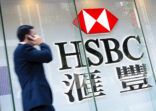Asian fixed income continues to be an attractive asset class for investors seeking diversification benefits, analysts from HSBC Asset Management noted.
Their comments come as the region’s overall growth momentum remains intact despite signs that China’s reopening impulse is fading. The Asian superpower is set to focus on targeted easing measures, the analysts detailed in their second half outlook note.
Over in southeast Asia, the analysts see opportunities supported by structural reforms, strong domestic demand, increased intra-regional trade and the return of tourism from
China’s reopening.
Against this backdrop, bonds in Asia have strong potential and attractive yields, which is further supported by the reversal in the strength of the US dollar as well as the possibility of an eventual end to the rate tightening cycle.
“Asian bond markets are currently enjoying a rare combination of macro tailwinds and good valuations. With much lower levels of inflation than the West and better prospects for growth, default rates in this part of the world should be well contained. In the US dollar investment grade space, Asia bonds trade at wider spread levels and lower duration versus US bonds, while issuers in this universe are of relatively high quality,” said Alfred Mui, managing director and head of Asia fixed income investment management at HSBC AM.
He added that bonds in southeast Asia also look compelling thanks to improving fundamentals and loosening local credit conditions, while the asset manager said it remains selective on investments in China’s real estate market.
Asian equities have also caught the eye of analysts from HSBC AM, on the back of their resilience despite macroeconomic headwinds.
Foreign investor positioning remains light, suggesting room for further foreign buying, the analysts wrote. Bright spots they envision are a recovery in the information technology sector in the second half, along with a positive outlook for Taiwan and South Korea.
Similarly, India and southeast Asia are seen as strong markets with favourable dynamics, increased foreign direct investment and positive reform prospects.
Regarding China, the asset manager said that it sees some near-term volatility, however.
“For China, we may see some short-term volatilities given concerns around the increasing youth unemployment rate, weakening property market momentum and high local government debt level. We do expect targeted policy easing and front-loaded fiscal support to maintain growth momentum and boost confidence,” said Caroline Yu Maurer, head of China and specialised Asia strategies at HSBC AM.
She believes that the monetary policy easing will follow low inflation rates in China.
In any case, Yu Maurer notes that “there is also room for increased CNY flexibility and mild depreciation, which can help offset deflationary fears and boost exports”.
Additionally, she expects initiatives and targeted measures such as tax incentives to sustain growth in sectors such as electric vehicles, high-end manufacturing and real estate.
The divergence in the performance of key markets has triggered macroeconomic uncertainty and an ‘out of sync’ theme, analysts from HSBC AM said.
Looking ahead, they expect that the US economy is likely to move into a recession by the end of the year thanks to restrictive monetary policy settings, tighter credit availability and the exhaustion of pandemic-era excess savings, the analysts opine.

















